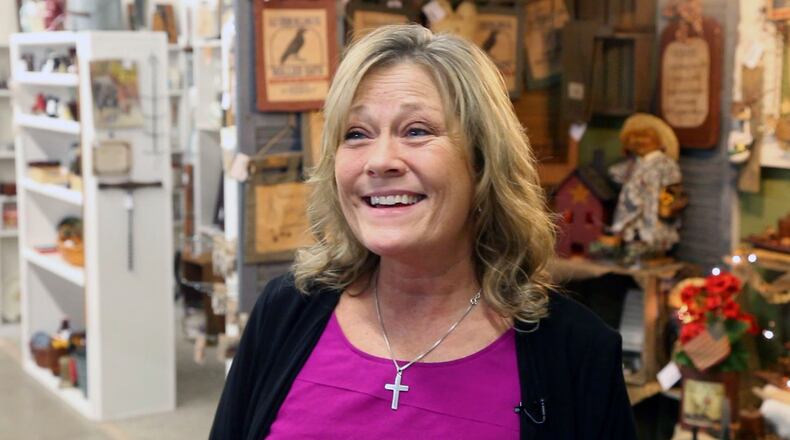Younger generations shun one-time treasures
The market for that 19th-century desk you inherited is about as lively as the guy who made it.
Simply put, the market for most antique furniture is moribund and won’t rebound anytime soon, antique appraisers said.
The trend has implications for southwest Ohio, which is home to scores of antique furniture collectors and dozens of shops that sell antique furniture and other old items.
Of course, there are exceptions to the trend. Rare pieces and those with exceptional provenance or high quality can garner higher prices. Fads also can temporarily drive up prices for some items, appraisers said.
What’s more, interest in certain types of vintage furniture is rising. Sales of so-called mid-century modern furniture from the 1950s and 60s are especially strong, market watchers say.
Experts generally define antiques as items of value that are at least 100 years old and less than 50 percent restored. They often cite the 1930 Smoot-Hawley Tariff Act, which set the 100-year benchmark for antiques in the United States and also established 1830 as the approximate beginning of mass production in the U.S.
PRICES PLUNGING
For decades, people collected antique chairs, tables, desks, dressers and cabinets as a hobby or as an investment. But the market today for antiques is flooded with unwanted items as baby boomers and their parents downsize and younger people shun these one-time treasures. As a result, prices have plunged, appraisers said.
For example, an authentic antique chest of drawers in good condition with nice inlays and brass hardware would have sold for about $2,500 in 1988. Today, that same item would sell for about $650, or 74 percent less, said Mark C. Grove, an accredited antiques appraiser and blogger based in Virginia.
Prices will continue to fall, Grove said.
“We’re probably within 10 years of the bottom,” Grove said. “This is going to last another 30 years and may never rebound. There is no precedent for this.”
Wayne Jordan, an auctioneer, appraiser and antiques blogger also based in Virginia, concurred.
“The days of the big, old furniture pieces are gone,” Jordan said. “The perception of the younger generation is that antiques are dusty, old, smelly, heavy, dysfunctional types of furniture. That’s why many dealers are not doing well now.”
DEMOGRAPHIC SHIFT
Antique lovers can’t blame the economy, Grove said. The culprit is “a worldwide demographic shift.”
In England, for example, prices last year for antique furniture fell for the eighth consecutive year, according to the latest Annual Antique Furniture Price Index published by Antique Collecting magazine.
The index is based on retail and auction prices for 1,400 typical pieces. It showed that prices dropped 7 percent in 2015 and fell an average of 4.7 percent over the eight-year period.
“Even though there were examples of high prices for individually exceptional pieces, unsold lots and low prices for general furniture seemed to indicate that buying had continued to dry up,” the magazine said in a Dec. 22 story about the index.
Jordan called the glut “a tsunami that is only going to get worse.”
“Young people just starting to set up a household can buy things for dirt cheap, and dealers can’t survive by selling things for dirt cheap,” Jordan said.
WAITING LIST
Julie Newton is customer relations manager for Antiques Village, 651 Lyons Road in Washington Twp. The 80,000-square-foot store opened three years ago and currently has about 350 individual vendors who rent space to sell antiques, collectibles and other items at the store. Another 300 people are on a waiting list to become vendors, she said.
The store is one of about 20,000 resale, consignment, thrift and antique shops in the United States. Those shops generate about $17 billion in annual sales, according to First Research, a business research firm based in Austin, Texas.
The inventory at Antiques Village is wide and varied, from large agricultural product signs to tiny zebra figurines. Per-item prices range from 50 cents to $3,500, Newton said.
Sales of antique furniture at the shop are slow these days, Newton said. But sales of collectibles, vintage kitchenware and tools, and salvaged architectural items such as wooden beams, doors and mantles, are strong. Jewelry sales are solid, too, she said.
By and large, the stores’ customers buy things “they can actually use,” Newton said. Most of the store’s customers are 30 to 65 years old, she said.
Jordan echoed Newton. He said the keyword today is “functionality.”
“A dealer would stock an antique armoire 30 years ago. But no one needs one of those things today. There’s a walk-in closet in every bedroom,” Jordan said.
SMART DEALERS
Smart dealers today bill themselves as vendors of vintage and general merchandise and stock their stores accordingly, Jordan said.
Still, there are dealers who refuse to change and are barely hanging on, Jordan said. And when it comes time to retire, those dealers struggle to sell their businesses at a profit. Instead, they often end up auctioning their inventory at a loss, he said.
“Who knows? Maybe in another 20 to 30 years that kind of stuff will come back,” Jordan said. “That’s if any of it is left because a lot of it going to landfills.”
Jordan knows first-hand the pain of having undesirable antiques. He said he and his wife recently downsized from a large home to a much smaller apartment. They had 30 days to dispose of many belongings, including antiques.
“During the last week, I was just giving stuff away, even things I had paid a good bit of money for,” Jordan said. “That’s what’s going to happen to a lot of people of my generation.”
Grove offered this advice.
“If you enjoy collecting, continue to collect, especially if you are young because it’s a buyer’s market,” Grove said. “But if you are a boomer or older, don’t buy anything you can’t eat.”
About the Author
